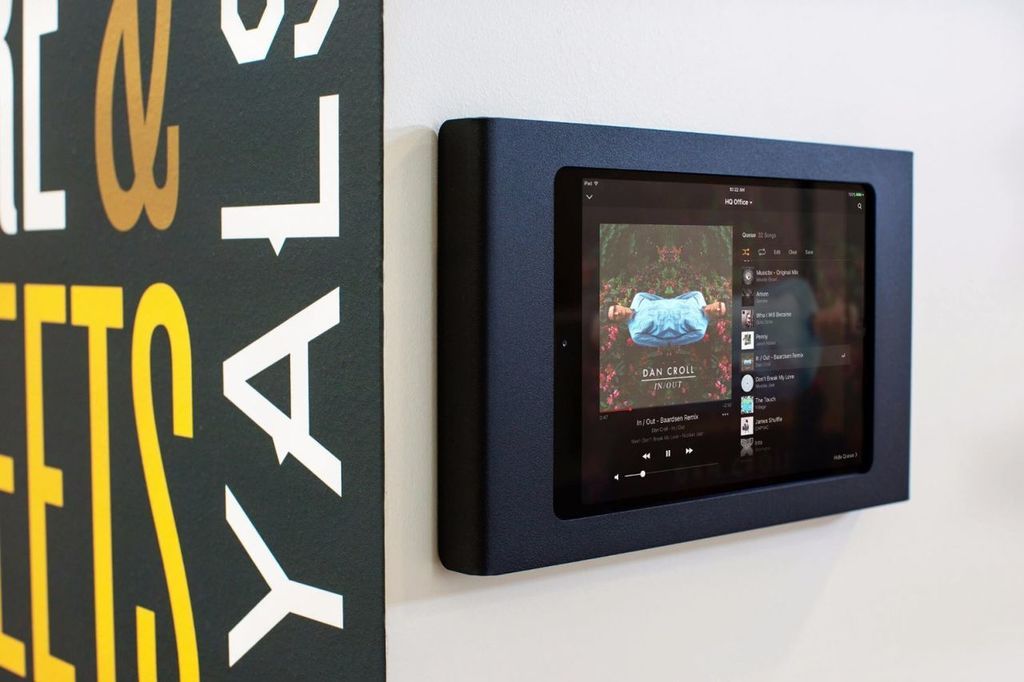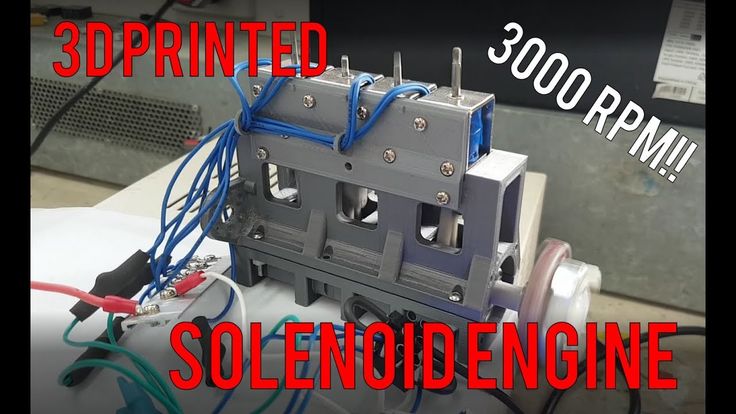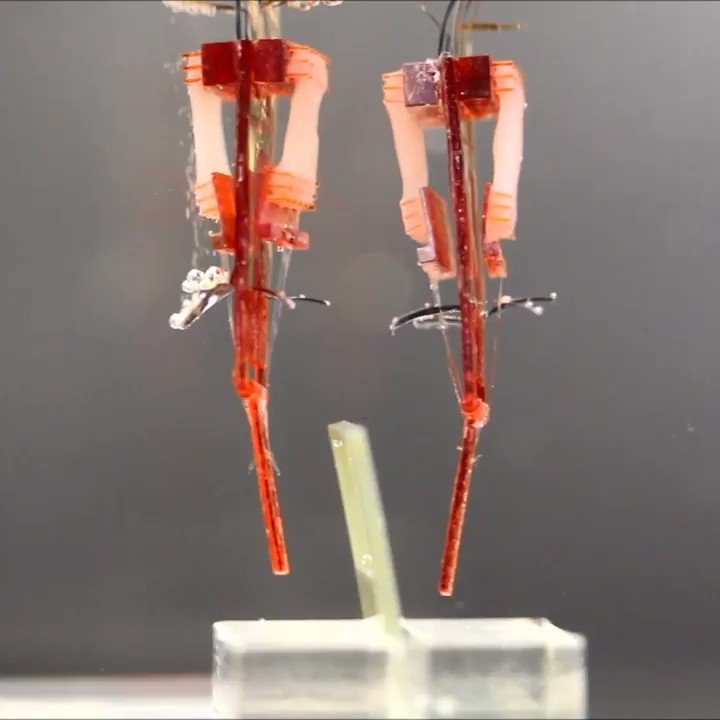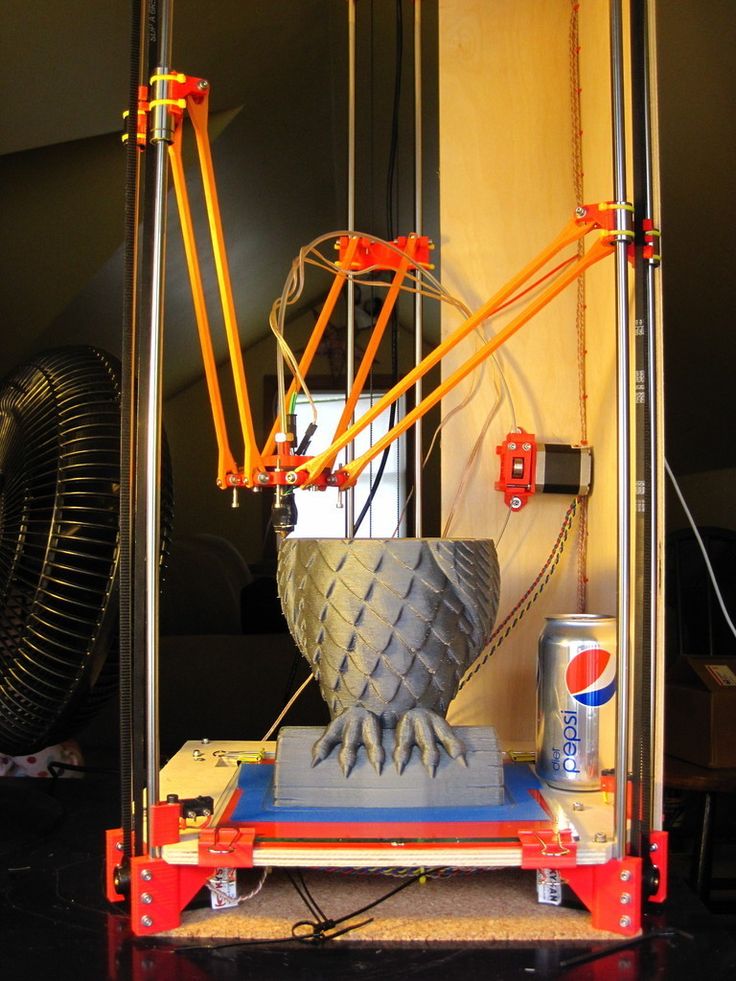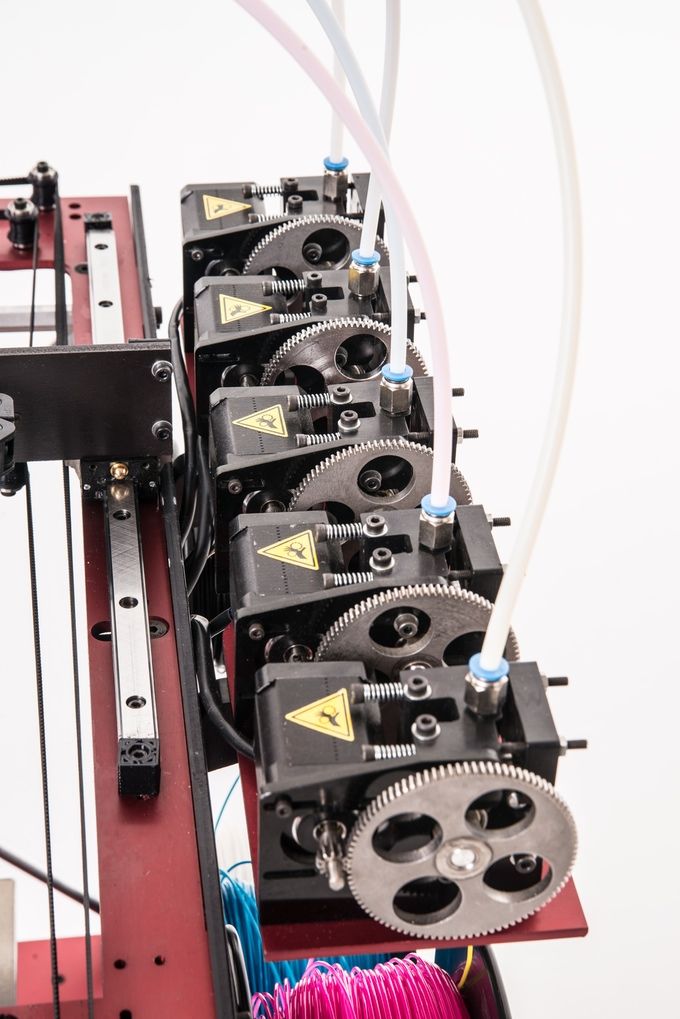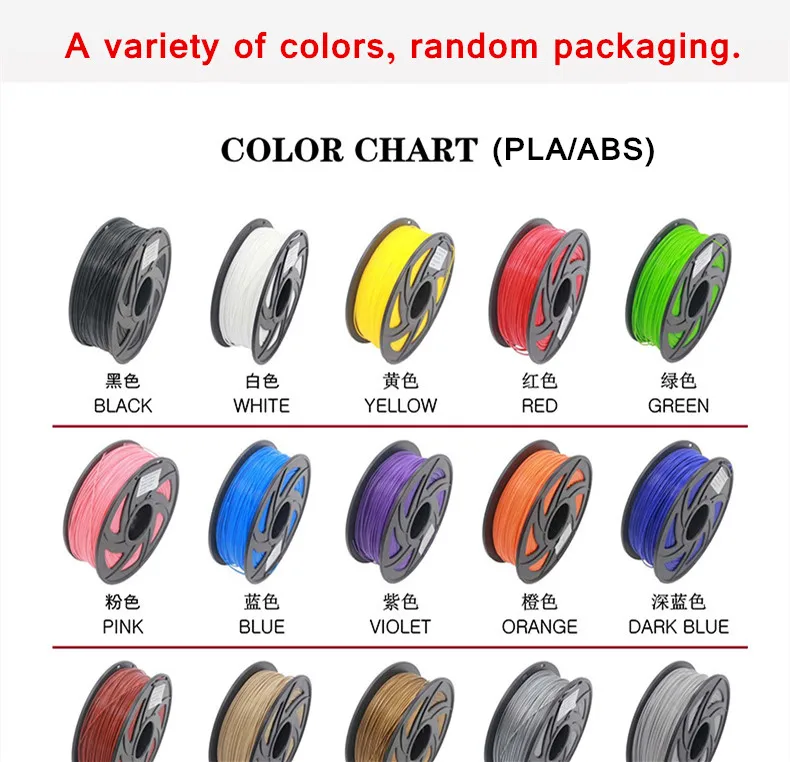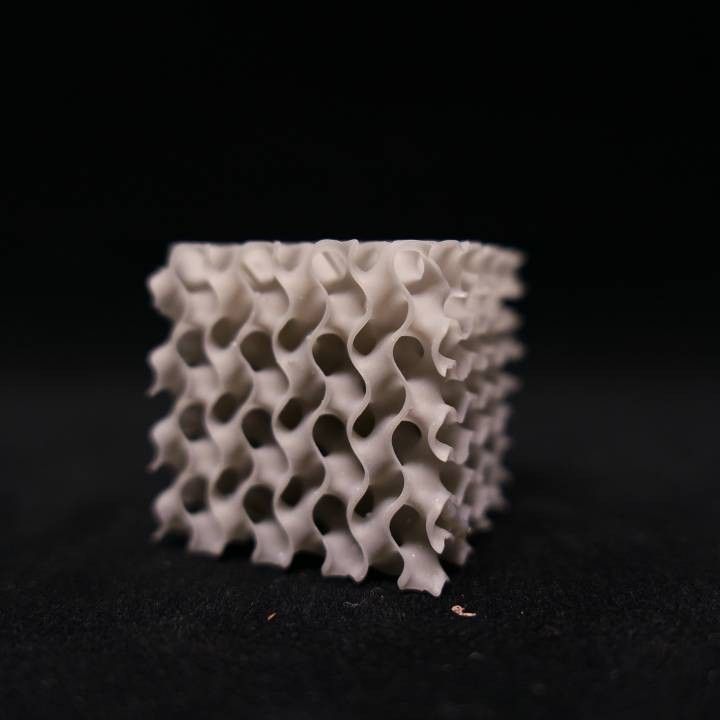3D printing patents expire
How Patents Die: Expiring 3D Printing Patents | Articles | Finnegan
Article
April 1, 2016
Robotics Business Review
By John F. Hornick
Authored by John F. Hornick
As I explain in my new book, 3D Printing Will Rock the World, 3D printing has been around for about 30 years, which means that some of the earliest patents in this space are fond memories. From 2002 to 2014, about 225 early 3D printing patents expired. About 16 key patents relating to 3D printing processes called Material Extrusion, Powder Bed Fusion, and Vat Photopolymerization expired in 2013-14. This means that 3D printing technology that is at least 20 years old is now available for anyone to use.
When a patent expires, the invention goes into the public domain. But figuring out when a patent has actually expired can be tricky. The current U. S. patent term is 20 years from the date the patent application was filed in the U.S. Patent and Trademark Office (USPTO). Don’t assume, though, that every patent necessarily expires 20 years after its filing date.
For applications filed on or after June 8, 1995, the patent term is 20 years from the filing date (or 20 years from the filing date of an earlier application if it claims the benefit of that application).
For patents that were in force on June 8, 1995, or that issued from an application filed before that date, the patent term is the longer of (a) 20 years from the application filing date (or 20 years from the filing date of an earlier application if it claims the benefit of that application), and (b) 17 years from the patent grant.
The technology covered by a patent is defined and limited by its claims. A patent is infringed by making, using, selling, offering to sell, or importing a machine, component, or process that falls within the scope of its claims. So for expired 3D printing patents, the only technology that can be used safely, without infringement, is the technology covered by the claims and nothing more, not even improvements on the technology.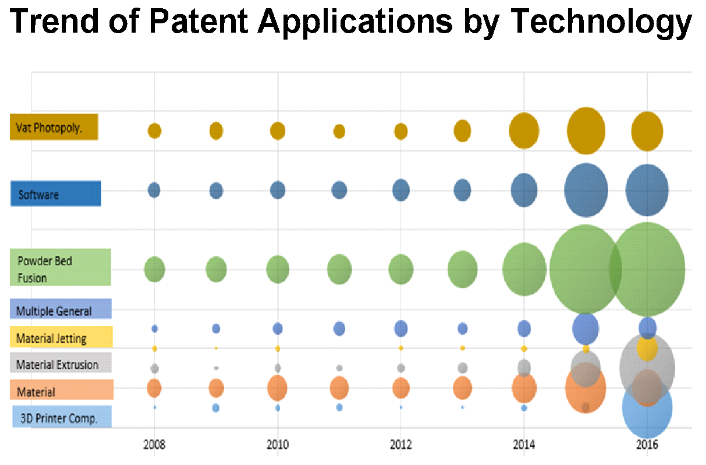
In other words, an expired 3D printing patent gives only the right to use that specific 20-year-old technology. To illustrate, let’s assume you know that a particular patent covering a coffee mug has expired. You might think you can freely make coffee mugs after the patent has expired, but if your new mugs have an improvement, like a protective sleeve, they might infringe a different, non-expired patent that covers coffee mugs with sleeves.
For a real-world example, consider Alexander Graham Bell’s telephone patent. After it expired in the late 1800s, anyone was free to use the technology covered by its claims. But telephone technology has come a long way since then, generating thousands of patents that companies like Apple and Samsung are warring over today. The freedom to use Bell’s technology doesn’t amount to much when the technology has long been surpassed.
So are expiring patents for old 3D printing technology going to change either the industrial or consumer 3D printing industries? For the former, probably not much. For the latter, there certainly are a lot of startups making Material Extrusion machines.
For the latter, there certainly are a lot of startups making Material Extrusion machines.
But will they be able to compete with innovators who obtain patents for improvements or new ways of 3D printing on the consumer level? While only time will tell, it seems unlikely.
Even though a few old 3D printing patents have expired, there is no shortage of patents and published applications in the additive manufacturing space (about 12,000).
Approximately 8,000 utility and design patents have been issued that relate in some way to additive manufacturing or rapid prototyping. Since 2000, approximately 4,000 applications have published that relate in some way to 3D printing. New applications are being filed all the time.
Some of these 12,000+ patents and applications cover 3D printing machines and machine components, but many are method patents, which cover methods, processes, and systems (including software) for making products and materials.
Others cover designs and materials. Importantly, although many of these patents and applications cover incremental improvements to old technology, others cover basic advances and whole new ways of making things.
Importantly, although many of these patents and applications cover incremental improvements to old technology, others cover basic advances and whole new ways of making things.
Again, today’s telephones are far different from Bell’s.
So making, using, selling, offering to sell, or importing a 3D printer that does anything beyond the scope of the claims of an expired patent may infringe some other patent. If the printer includes any features or functionality covered by an improvement patent, the owner of that patent may assert an infringement claim. The same is true of method patents.
There is no quick and easy way to know if an additive manufacturing machine or process infringes one of the 8,000 patents or could infringe one of the 4,000 published applications (there is no potential liability for practicing the claims of a pending application, unless and until it issues as a patent).
Before making, using, selling, offering for sale, or importing any machine or component, or using any additive manufacturing process, ask a patent attorney if you’re concerned about infringement. The attorney can perform a patent search, analyze the relevant patents in the space, and provide a "freedom to operate" opinion.
The attorney can perform a patent search, analyze the relevant patents in the space, and provide a "freedom to operate" opinion.
On the other hand, the attorney may tell you that building and selling your 3D printer will infringe someone’s patent. You might also ask the attorney to provide an opinion on whether such patents are likely to be declared invalid by a court or the USPTO. But be forewarned. Even with an opinion saying you don’t infringe or that the patent is probably invalid, or both, you could still be sued for patent infringement, and even lose an infringement lawsuit.
Having such opinions, however, provide some peace of mind and may protect you from a charge that you willfully infringed a patent.
The Challenge And Opportunity of 3D Printing Patent 684116B2 « Fabbaloo
Diagram from US Patent 684116B2 [Source: Google Patents]You likely are not familiar with US patent 684116B2, but you’ll likely be hearing a lot more about it in the next few years.
Patents are essentially a government-granted monopoly for a specific method for a limited time period. During that period the patent owner has exclusive rights to use the method, and can seek damages or pursue other legal avenues against any other party that attempts to use the same method.
During that period the patent owner has exclusive rights to use the method, and can seek damages or pursue other legal avenues against any other party that attempts to use the same method.
It’s a kind of reward for the ingenuity of the inventors, as they can leverage the patent’s powers to create a good business. Usually this means paying premium prices for a product based on the patent’s method.
However, eventually the patent’s term expires and at that point the method is effectively public domain; anyone can use it without fear of legal action. Typically this results in a small explosion of smaller vendors marketing similar products based on the expired method, often at far lower price levels and sometimes with unusual differences that the original patent owner had not considered.
Readers of this publication will be aware of a case involving 3D printing that happened in 2009. At that time Stratasys’ original patent on the FDM process expired, opening the door for others to produce 3D printers with the same method. We all know what happened next: hundreds of 3D printer startup companies emerged, with MakerBot being one the earliest success stories.
We all know what happened next: hundreds of 3D printer startup companies emerged, with MakerBot being one the earliest success stories.
Since then the intense competition among these new entrants has driven the technology to levels unimagined years ago. Today we have 3D printers offering considerable automation, a massive choice of materials, equipment size, and all with significant reliability improvements. It’s a good time for users of FFF 3D printer manufacturers.
All of that happened due to the expiry of the Stratasys patent.
Back to US Patent 684116B2. This patent is currently assigned to 3D Systems, one of the larger players in 3D printer manufacturing. The patent’s abstract says:
“A selective deposition modeling method and apparatus for dispensing a curable phase change material. The dispensing temperature of the material is set at or less than a thermally stable temperature value for the material in which the reactive component of the material remains substantially uncured when held at the temperature for a desired time period.
The dispensed material is provided with an environment that enables the material to solidify to form layers of the object. The solidified material is normalized to a desired layer thickness and is then cured by exposure to actinic radiation.”
At top you can see an image of a conceptual machine that makes use of the patent’s method. Basically it describes a moving tool head that selectively deposits a layer of liquid photopolymer resin, and a UV light source that then solidifies that layer. This process repeats, layer-by-layer, to build up a complete 3D object.
This process seems to be what 3D Systems use in their (Multijet) MJP line of 3D printers. Here’s a video of someone using a 3D Systems ProJet MJP 2500. At the 2:50 mark, you can see the system depositing and solidifying the photopolymer as described in the patent.
What’s the big deal here? It turns out that patent 684116B2 expires on October 9, 2022. That’s only two years and seven months away.
That’s only two years and seven months away.
After that date, anyone could theoretically market a device that uses the same process described in patent 684116B2. You can be sure that will happen.
But what will be the effect on 3D Systems? What will change after that date?
In a way, today is similar to the situation the 3D printing industry found itself in 2007, a couple of years before the Stratasys patent expired. It is highly likely there are startups or even existing 3D printer companies starting now to design and build new 3D printers that use this process. They cannot sell them until October 2022, but they can certainly build them stealthily in a lab.
The strategy here would be to quietly develop the systems so that they are ready to be announced and released when the patent expires. If one were to start developing a system as the patent expired, you’d be far behind others who smartly started earlier.
Thus in the fall of 2022 it is highly likely we’ll see a slew of announcements for new 3D printers using this process. It could be 2009 all over again, where multiple parties compete for the business through innovations and price competition.
It could be 2009 all over again, where multiple parties compete for the business through innovations and price competition.
This would be very good news for those interested in using this 3D printing process.
While the good news lands on users, the opposite could face 3D Systems, who at that point would lose their monopoly on the process. However, it’s not all doom and gloom; there are plenty of interesting options for 3D Systems.
It is important to remember that 3D Systems’ MJP technology is very mature and quite powerful. It might take some years for new entrants to match their capabilities. This also happened after 2009 in the FFF world.
3D Systems will also have a large amount of equipment placed at customer sites that’s under longer term leases. These machines are financially obligated to stay operating during the lease period. During that period these clients will continue to purchase materials for their MJP systems from 3D Systems at similar price levels. Thus 3D Systems has a guaranteed revenue stream for years to come. Even now, eleven years after the Stratasys patent expired, that company still has significant material revenue from their FDM fleet.
Thus 3D Systems has a guaranteed revenue stream for years to come. Even now, eleven years after the Stratasys patent expired, that company still has significant material revenue from their FDM fleet.
Stratasys made a strong move a couple of years after their major patent expiry by acquiring Objet. In the end, it turned out to be Objet acquiring Stratasys, but the strategy was still valid: Objet still had multiple active patents on 3D printing, and they would allow Stratasys to continue operating in a similar manner for some years forward. That technology is now their leading product.
Could 3D Systems consider a major acquisition in a similar strategy? I think that while they’ve struggled financially, they still have considerable resources and could make a move on another party. If this was considered, I don’t believe it would be to attempt an acquisition of Carbon or Desktop Metal, as their valuations are likely higher than 3D Systems could afford. But there are many smaller players with interesting technologies that could be considered.
The situation with patent 684116B2 is surely to be one of the big concerns for the as-yet-unnamed incoming CEO for 3D Systems.
Via Google Patents
Key 3D Printing Patent Expiration
The start of this year could mark a new milestone in the 3D printing revolution as one of the key 3D printing technology patents related to Selective Laser Sintering (SLS) expires. ). The owner of the patent in question is Carl R. Deckard, who registered an application for this patent on May 31, 1994, and received it on January 28, 1997.
Most US patents expire after 20 years, but there is an exception to this rule that applies to patents issued prior to June 8, 1995. (Deckard's patent no. US5597589 is included in this exception). The duration of patent applications filed before this date is longer than one of the following two options: either 17 years from the date of issue of the application, or 20 years from the earliest date of registration of the application.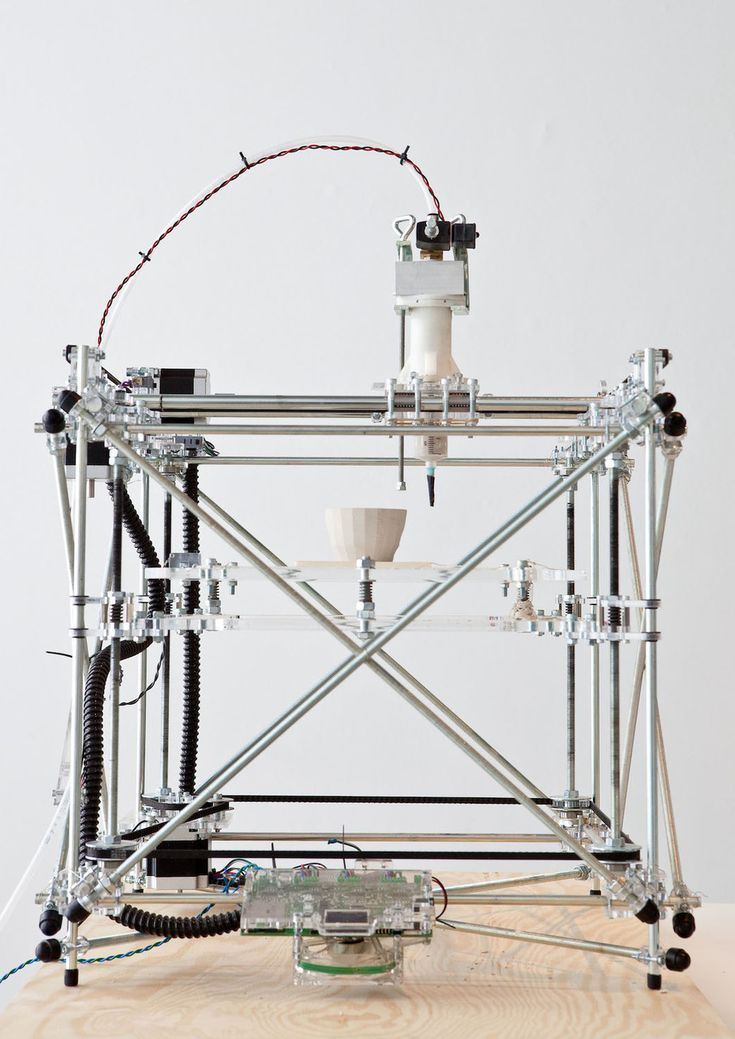
Carl R. Deckard Patent No. US5597589, is a continuation or divisional application of prior patents filed up to 1995, namely: patent No. US5376580 registered July 10, 1992, No. US5132143 - June 21, 1990, and No. US4863538 - October 17, 1986.
So, in this case, the shortest period of validity is 20 years from the earliest date of registration of the main patent, let's say that the application for the main patent was registered on October 17, 1986, then such a patent would expire on October 17, 2006.
A longer patent term would be 17 years from the date of issue of the patent on January 28, 1997, and it expired the other day, or rather on January 28, 2014!
This date would coincide with the date predicted by Duanne Scott, Design Promotion Specialist at Shapeways. He said that SLS technology will become available in February this year.
So get ready folks, the 3D printing revolution is coming.
SLS is a low cost, high resolution 3D printing technology, hence its revolutionary potential.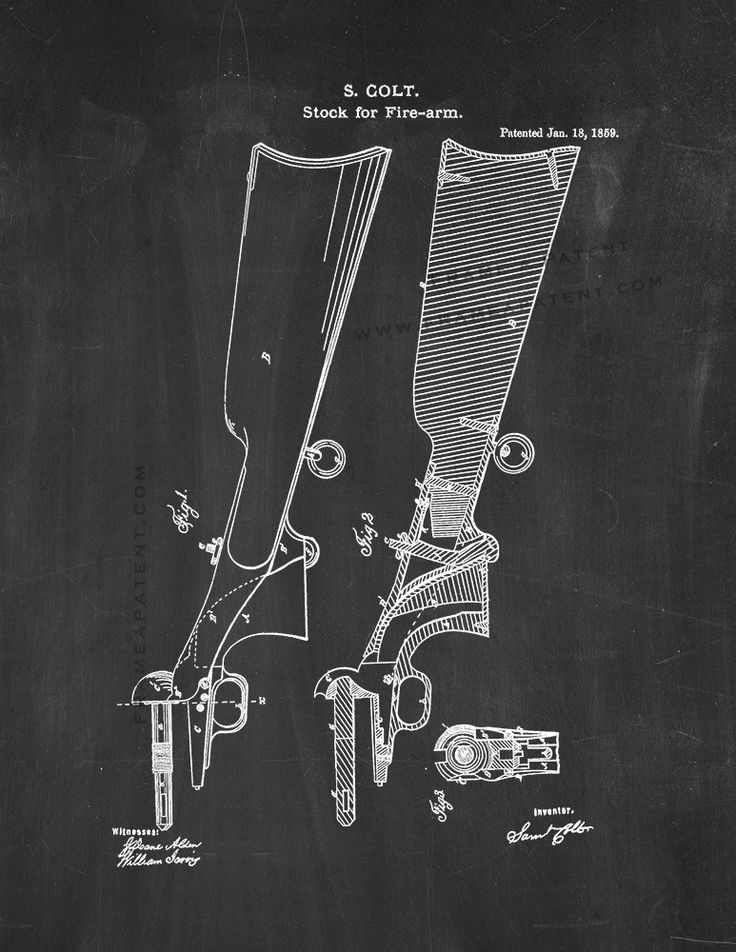
The following is a description of Deckard's patent for "Apparatus for the production of parts by selective sintering":
"Apparatus for selective sintering of a layer of powder for the production of a part made from a plurality of sintered layers. The device consists of a computer that controls the laser and directs the laser energy onto the powder to create a sintered mass. The computer either determines or is programmed in such a way that the limits of the boundaries of the desired cross-sections of the part area are set. At each cross section, the laser beam scans the powder layer, then proceeds to sinter it within the cross section. Next, the powder is applied, and the layers are sequentially baked until the part is completely formed. Desirably, the powder dispenser includes a drum that moves horizontally across the target area of the part and rotates in the reverse direction to smooth and distribute the powder in an even layer over the entire target area.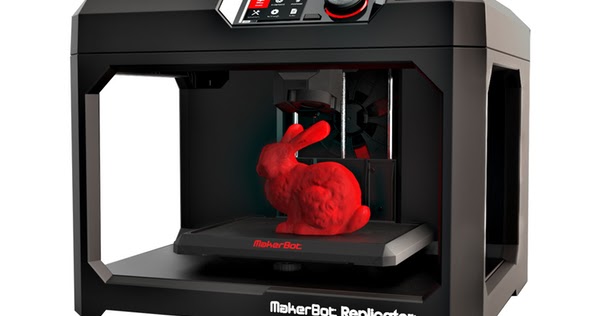 The downflow system provides temperature control of the air flow through the target area to create an average powder temperature during the sintering process.
The downflow system provides temperature control of the air flow through the target area to create an average powder temperature during the sintering process.
Regarding the consequences of patent expiration, whether they come immediately or more gradually, people differ on this, but one thing is already clear that as soon as certain barriers to intellectual property are removed, this leads to increased competition and lower prices for consumers .
This has already happened with a 3D printing technology called Fused Deposition Modeling (FDM). After the FDM patent expired, sales of these printers skyrocketed, and their price dropped from a few thousand dollars to $300, given the fact that many of these low-cost 3D printers were made in China.
2014 will be an important year for the development of 3D printing. Another patent expires this year:
"Simultaneous Multilayer Vulcanization in Stereolithography"
Application Date: April 25, 1994.
Date of issue of the patent: January 28, 1997
Expiration date April 25, 2014
US Patent No. US5597520
US5597520
Two other patents, US6007318 and US5554336 expire in 2015 and 2016. respectively.
"Method and device for the production of three-dimensional objects using stereolithography"
Application registration date: June 5, 1995
Date of issue of the patent: September 10, 1996
Expiration date June 5, 2015
US Patent No. US5554336
Owner: 3D Systems
"Method and Apparatus for Prototyping 3D Objects"
Application Date: December 20, 1996
Date of issue of the patent: December 28, 1996
Expiration date December 20, 2016
US Patent No. US6007318
Owner: Z Corp
Other patents expiring this year include 3 3D Systems patents (all patents include the SLS method) and 6 patents from Z Corp. Stratasys" including FDM, support material removal and optimization. The technology described in these patents promises to be an incredible breakthrough in the development of 3D printing technology.
Thus, in 2014. – and perhaps even today – we can start compiling a historical chronicle of 3D printing.
Thanks to Jenny Caret dash Caret for providing this patent information.
Article prepared for 3dtoday.ru
The Complete Guide to Stereolithographic (SLA) 3D Printing
Stereolithographic (SLA) 3D printing is gaining immense popularity due to its ability to produce highly accurate, isotropic and waterproof prototypes and models with fine details and smooth surface of various modern materials.
This comprehensive guide explains how SLA printing technologies work, why thousands of professionals use them today, and how this 3D printing technology can be useful in your work.
White Paper
Download our White Paper to find out how SLA printing works, why thousands of people use it today, and how this 3D printing technology can help your work.
Download technical report
The development of 3D printing technology continues to influence how companies approach prototyping and manufacturing. This technology is becoming more accessible, and equipment and materials are developing in accordance with the possibilities and requirements of the market. That's why today designers, engineers and others are integrating 3D printing into workflows at all stages of development.
This technology is becoming more accessible, and equipment and materials are developing in accordance with the possibilities and requirements of the market. That's why today designers, engineers and others are integrating 3D printing into workflows at all stages of development.
3D printing is helping industry professionals reduce recruitment costs, accelerate iteration, streamline manufacturing processes, and even discover entirely new business models.
Stereolithographic 3D printing technology has evolved significantly. In the past, resin 3D printers were monolithic and costly, requiring skilled technicians and costly service contracts to operate. Today's small desktop printers are highly flexible and produce industrial-quality products at a much lower cost.
Stereolithography is a type of additive manufacturing. It is also known as photopolymerization in the bath or 3D printing using polymer resin. Devices that use this technology have a common principle of operation: under the influence of a light source (laser or projector), a liquid polymer turns into a solid plastic. The main differences are in the location of the main components such as the light source, work platform and resin tank.
The main differences are in the location of the main components such as the light source, work platform and resin tank.
See how stereolithography 3D printing is done.
Stereolithographic 3D printers use light-sensitive curable materials called "polymers". When stereolithographic polymers are exposed to specific wavelengths of light, short molecular chains join together causing the monomers and oligomers to polymerize into either rigid or flexible patterns.
Graphical representation of the main mechanisms of stereolithographic 3D printing.
Models printed on SLA printers have the highest resolution and accuracy, the finest detail, and the smoothest surface of any 3D printing technology, but the main advantage of this method is its versatility.
Materials manufacturers have developed innovative formulas for stereolithographic polymers with a wide range of optical, mechanical and thermal properties similar to standard, engineering and industrial thermoplastic resins.
Comparison of 3D stereolithography with two other common plastic modeling technologies: Fused Deposition Modeling (FDM) and Selective Laser Sintering (SLS).
Sample
Experience the quality of 3D stereolithography for yourself. We will send a free sample of the printed model directly to your office.
Request a Free Print Sample
Learn how to go from design to 3D printing with a Form 3 3D printer. Watch this 5-minute video to learn the fundamentals of using a Form 3 printer, from software and materials to processes printing and post-processing.
Use any CAD software or 3D scan data to design the model and export it to a 3D print file format (STL or OBJ). All printers based on SLA technology work with software that allows you to set print parameters and separate the digital model into layers. After the settings are complete, the model preparation software sends instructions to the printer via a wireless or cable connection.
More advanced users can design directly for SLA technology or, for example, print models with voids to save materials.
After a quick check of the settings, the printing process starts. The printer may run unattended until printing is complete. In printers with a cartridge system, material is replenished automatically.
Formlabs' online Dashboard allows you to remotely manage printers, resins, and employee access.
After printing is completed, models should be rinsed with isopropyl alcohol to remove resin residue from their surface. After the washed models have dried, some materials require final polymerization, a process that ensures the best possible strength and stability of the parts. Finally, remove the support structures from the models and sand down the remaining traces of the supports for a clean finish. Models produced with SLA technology can be machined, primed, painted or assembled depending on the intended use.
The final polymerization is particularly important for functional polymer resins used in engineering, dentistry and jewellery.
Engineers, designers, fabricators and others choose stereolithography 3D printing because it provides excellent detail, smooth surfaces, superior model fidelity, isotropy, and water resistance. In addition, it allows you to work with various materials.
Because 3D printing builds models layer by layer, the strength of finished parts can vary depending on the orientation of the part relative to the printing process: the X, Y, and Z axes will have different properties.
Extrusion-based 3D printing processes such as deposition filament modeling (FDM) are anisotropic due to a special approach to creating different layers during the manufacturing process. This anisotropy limits the application of FDM technology or requires additional changes in the design of the model to compensate for it.
Check out our detailed guide comparing FDM vs. SLA 3D printers to see how they differ in terms of print quality, materials, application, workflow, speed, cost, and more.
SLA 3D printers to see how they differ in terms of print quality, materials, application, workflow, speed, cost, and more.
Stereolithographic 3D printers, on the other hand, allow the production of highly isotropic models. Achieving detail isotropy relies on a number of factors that can be tightly controlled by integrating the chemical composition of materials with the printing process. During printing, the components of the polymers form covalent bonds, but when creating subsequent layers, the model remains in an "immature" state of partial reaction.
When immature, the resin retains polymerizable groups that can form bonds between layers, giving the model isotropic and waterproof properties after final curing. At the molecular level, there are no differences between the X, Y, and Z planes. This results in models with predictable mechanical characteristics critical for applications such as jigs and fixtures and finished parts, as well as functional prototyping.
SLA printed parts are highly isotropic compared to FDM parts.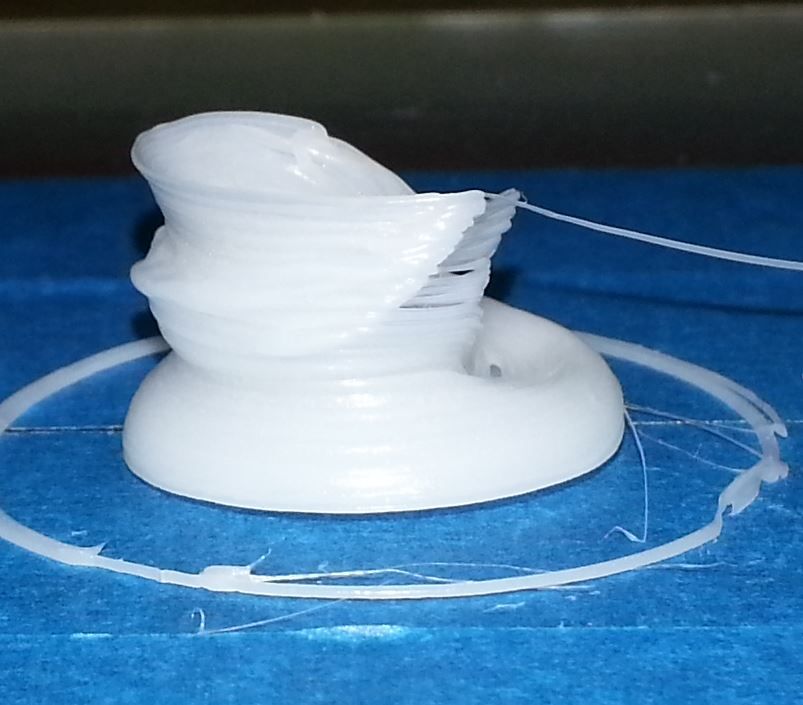
Due to its isotropic nature, stereolithographically printed models, such as this jig for Pankl Racing Systems, can withstand directional loads during production.
SLA printed objects are continuous, whether they are solid or have internal channels. Watertightness is important when it is necessary to control and predict the impact of air or liquid flows. Engineers and designers are using the water resistance of stereolithography printers for air and fluid flow applications in the automotive industry, biomedical research, and to test the design of parts in consumer products such as kitchen appliances.
OXO relies on the water resistance of stereolithographic printed models to create durable working prototypes of air and liquid products such as coffee makers.
Stereolithographic 3D printing is used to produce precise, reproducible components in a variety of industries, including dentistry and manufacturing. In order to produce accurate models during the printing process, many factors must be strictly controlled.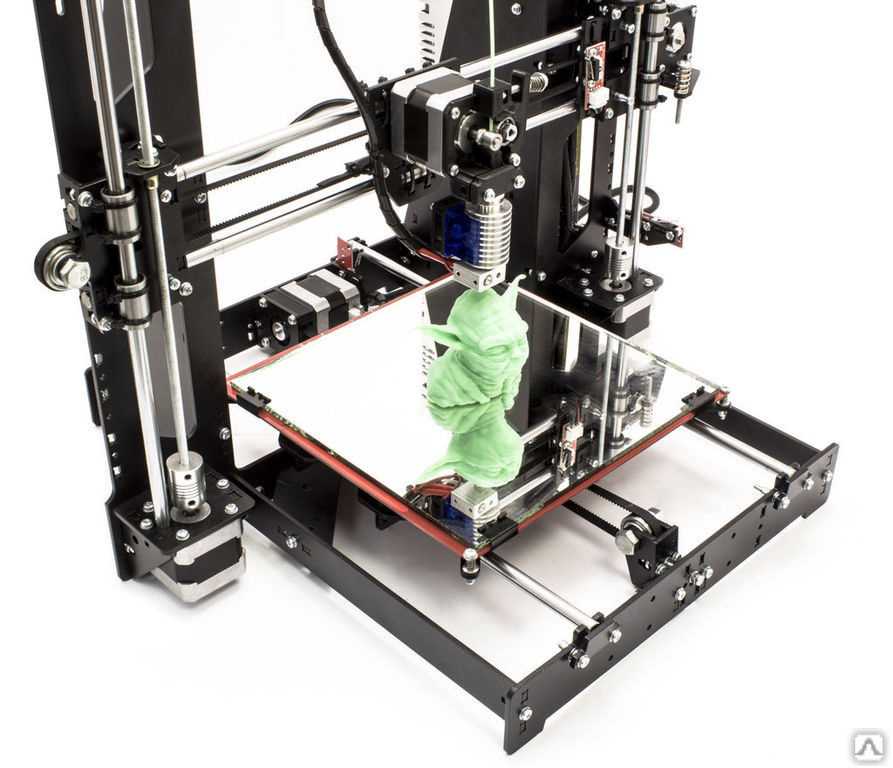
The quality of stereolithographic 3D printing is somewhere between standard and precision machined. SLA has the highest tolerance compared to other commercial 3D printing technologies. Learn more about tolerances, accuracy and precision in 3D printing.
The heated resin tank combined with the closed working environment provide virtually the same conditions for every model. The higher accuracy also depends on the lower printing temperature compared to thermoplastic-based technologies in which the raw material is melted. Because stereolithography uses light instead of heat, it prints at close to room temperature and models are not subject to thermal expansion and contraction.
Dental example (comparing a scanned component to an original CAD model) demonstrating the ability to maintain tight tolerances for an entire stereolithographic model.
LFS stereolithography 3D printing involves an optic in a Light Processing Unit (LPU) that moves along the X axis. A single galvanometer positions the laser beam in the Y direction and then directs it along the deflection parabolic mirrors so that it is always perpendicular to the plane of the platform, so it always moves in a straight line, ensuring maximum precision and accuracy. This allows consistency to be achieved as the size of the equipment increases, for example, when working with a large-sized Formlabs Form 3L stereolithography printer. The LPU also uses a spatial filter, which forms a clear laser spot.
A single galvanometer positions the laser beam in the Y direction and then directs it along the deflection parabolic mirrors so that it is always perpendicular to the plane of the platform, so it always moves in a straight line, ensuring maximum precision and accuracy. This allows consistency to be achieved as the size of the equipment increases, for example, when working with a large-sized Formlabs Form 3L stereolithography printer. The LPU also uses a spatial filter, which forms a clear laser spot.
The characteristics of the individual materials also play an important role in ensuring the reliability and reproducibility of print results.
Formlabs Rigid Resin has a high "green modulus", or modulus of elasticity before final polymerization, which allows you to print very thin models with high precision and reliability.
Stereolithographic printers are considered the best 3D printers due to the smooth surface of the produced models, the appearance of which is comparable to parts produced by traditional methods such as machining, injection molding using molds and extrusion.
This surface quality is ideal when a perfect finish is needed and also helps reduce post-processing time because these models are easy to sand, polish and paint. For example, large companies like Gillette use stereolithography 3D printing to create finished products such as razor handles in their Razor Maker platform.
Large companies such as Gillette use stereolithography 3D printing to create finished products such as razor handles in their Razor Maker platform.
The z-layer height is often used to determine the resolution of a 3D printer. On Formlabs stereolithographic 3D printers, it can be adjusted from 25 microns to 300 microns to trade off speed and print quality.
FDM and SLS printers typically print Z-axis layers between 100 and 300 microns wide. At the same time, a part printed with 100 micron layers on an FDM or SLS printer is very different from a part printed with 100 micron layers on an SLA printer.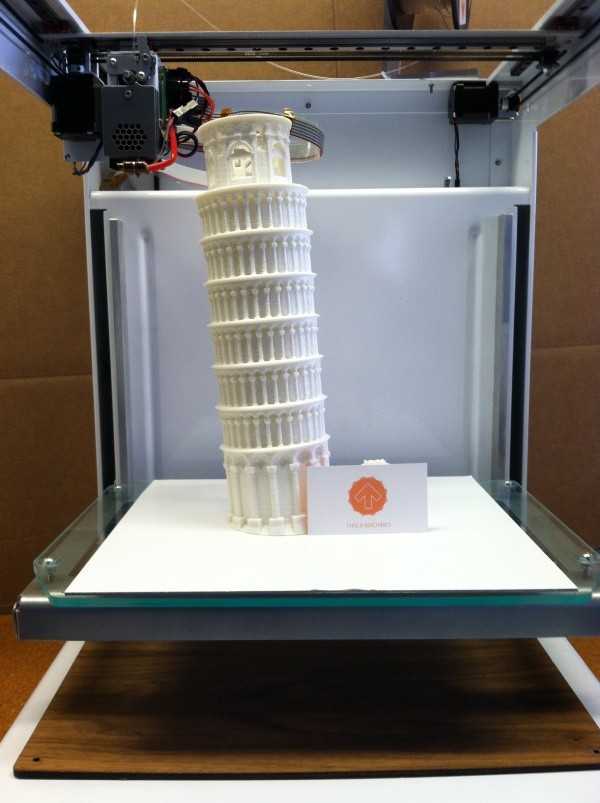 Models printed on a stereolithographic printer have a smoother surface immediately after printing, because their outer walls are straight, and each new printed layer interacts with the previous one, smoothing out the effect of the stairs. When printed on an FDM printer, layers are often visible in models, and the surface of models printed on an SLS printer has a grainy structure due to sintered powder.
Models printed on a stereolithographic printer have a smoother surface immediately after printing, because their outer walls are straight, and each new printed layer interacts with the previous one, smoothing out the effect of the stairs. When printed on an FDM printer, layers are often visible in models, and the surface of models printed on an SLS printer has a grainy structure due to sintered powder.
In addition, the stereolithography printer can print fine details: the Form 3 laser spot size is 85 microns, while industrial SLS printers have a laser spot size of 350 microns, and FDM-based devices use nozzles with a diameter of 250– 800 microns.
Models printed on FDM printers often show layer lines and may have inaccuracies around complex features. Models printed on stereolithography printers have sharp edges, a smooth surface, and almost imperceptible layer lines.
The advantage of SLA polymers lies in a wide range of formulations offering a variety of characteristics: they can be soft or hard, contain additives such as glass and ceramics, or have special mechanical properties such as high bending temperature under load or impact resistance.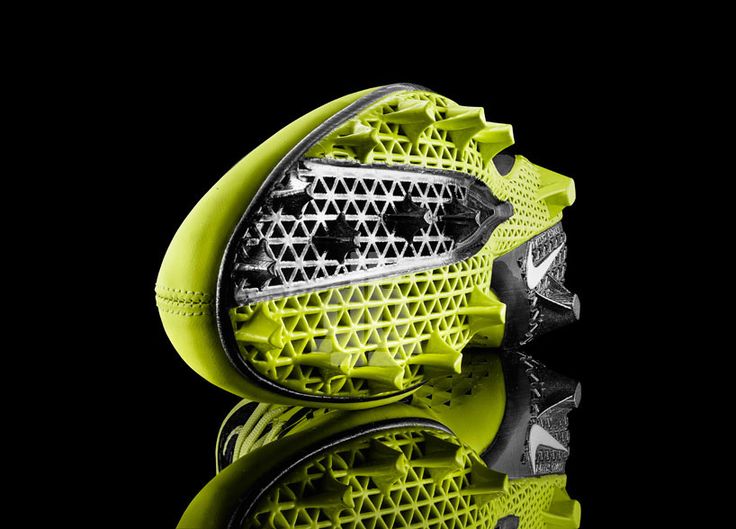 Materials can be designed for a particular industry, such as dentures, or have properties close to those of final materials to create prototypes that can be tested and run under stress.
Materials can be designed for a particular industry, such as dentures, or have properties close to those of final materials to create prototypes that can be tested and run under stress.
Ceramic Resin can be 3D printed with a stone-like texture and then fired to create a ceramic product.
In some cases, it is this combination of versatility and functionality that is leading businesses to adopt polymer-based 3D printing in-house. After solving existing problems through the use of a certain functional polymer, other applications are usually quickly discovered. In this case, the printer becomes a tool for discovering the various properties of different polymers.
For example, hundreds of engineers in the Design and Prototyping group at the Advanced Manufacturing Equipment Research Center (AMRC) at the University of Sheffield have access to 12 stereolithographic 3D printers and various construction materials that they use in numerous research projects for these partner companies. like Boeing, Rolls-Royce, BAE Systems and Airbus. They printed High Temp Resin washers, brackets, and a mounting system for a sensor that must operate in high temperature conditions, and used Durable Resin to create complex spring components for a material handling robot as part of a composite manufacturing automation system.
like Boeing, Rolls-Royce, BAE Systems and Airbus. They printed High Temp Resin washers, brackets, and a mounting system for a sensor that must operate in high temperature conditions, and used Durable Resin to create complex spring components for a material handling robot as part of a composite manufacturing automation system.
AMRC engineers have access to 12 stereolithographic 3D printers and various construction materials, allowing them to create custom-designed parts for a variety of research projects, such as arms for a stacking robot (above) and mounts for an environmental sensor high temperature (below).
Material selection
Need help choosing a 3D printing material? Our new interactive materials wizard will help you make the right material decision based on what you're going to use it for and the properties you care most about in our growing range of polymers.
Get material recommendations
Stereolithographic 3D printing makes it easier for businesses across industries to innovate.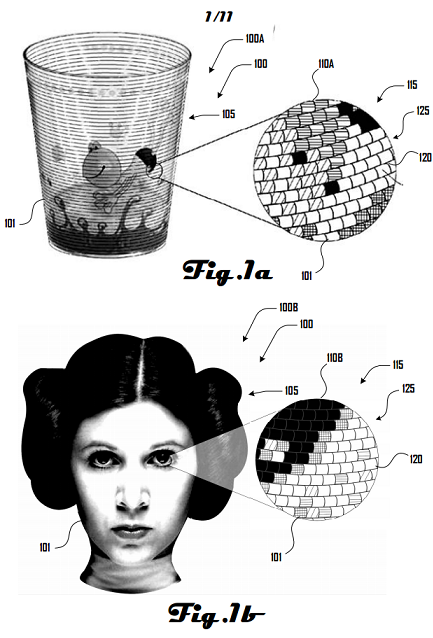 Such industries include engineering, manufacturing, dentistry, healthcare, education, entertainment, jewelry, and audiology.
Such industries include engineering, manufacturing, dentistry, healthcare, education, entertainment, jewelry, and audiology.
Rapid prototyping with 3D printing enables engineers and developers to turn ideas into working proofs of concept, transform concepts into high-quality prototypes that look and work like end products, and take products through testing phases to launch into mass production.
Find out more
By creating the necessary prototypes and 3D printing special tools, molds and production aids, manufacturing companies can automate production and optimize workflows at a much lower cost and in much faster time than traditional manufacturing. Thus, production costs are reduced and defects are prevented, quality is improved, assembly is accelerated and labor productivity is increased.
Find out more
Digital Dentistry reduces the risks and uncertainties associated with human error, enabling consistent quality and precision at every step of the workflow, and improving patient care. 3D printers can produce a range of high quality custom products at low cost, providing exceptional fit and reproducible results.
3D printers can produce a range of high quality custom products at low cost, providing exceptional fit and reproducible results.
Learn more
3D printers are multifunctional tools for creating immersive learning and research environments. They stimulate creativity and introduce students to professional-level technology, enabling the implementation of the STEAM method in the fields of science, technology, art and design.
Find out more
Affordable, professional-grade desktop 3D printers help clinicians produce medical devices that meet individual needs and improve patient outcomes. At the same time, the organization significantly reduces time and money costs: from laboratories to operating rooms.
Learn more
High resolution printed physical models are widely used in digital sculpting, 3D character modeling and prop making. 3D-printed models have been featured in animated films, video game characters, theatrical costumes, and even special effects for blockbuster films.
Learn more
Professional jewelers use the power of CAD and 3D printing to rapidly prototype, customize jewelry to customer specifications and produce large batches of blanks for casting. Digital tools allow you to create dense, highly detailed models without the tedious, error-prone production of stencils.
Learn more
Hearing professionals and labs use digital workflows and 3D printing to simplify the production of high-quality custom and hearing aids, as well as to mass-produce behind-the-ear hearing aids, hearing protectors, custom earmoulds, and headphones .
Find out more
Many companies are starting to use 3D printing technology through service bureaus and laboratories. Outsourcing can be a great solution when the need for 3D printing is infrequent or you need to do one-off jobs using materials that have unique properties or produce special models. Service bureaus can also provide advice on various materials and offer additional services such as design or improved finishes.
The main disadvantages of outsourcing are the high cost and duration of production. Often, outsourcing becomes a step on the way to in-house production as needs grow. One of the main advantages of 3D printing is its speed compared to traditional production methods. But it is noticeably reduced when the delivery of the model produced by the involved organization takes several days or even weeks. As demand and production capacity increase, the costs of outsourcing are rising rapidly.
With the increasing availability of industrial quality 3D printing today, more companies are opting to bring 3D printing into their factory right away, vertically integrating it into existing workshops or labs, or providing printers to engineers, designers and other professionals who benefit from digital transformation. projects into physical models or are engaged in the production of products in small batches.
Compact desktop stereolithography 3D printers are an excellent solution for rapid model production. Depending on the number of parts needed and the volume of prints, the investment in a compact 3D printer can pay for itself in just a few months. In addition, compact appliances allow you to purchase just the amount of equipment you need to run your business and scale your production by adding more units as demand grows. Using multiple 3D printers also allows you to print models from different materials at the same time. And when the need arises for the production of large parts or the use of non-standard materials, service bureaus can come to the rescue.
Depending on the number of parts needed and the volume of prints, the investment in a compact 3D printer can pay for itself in just a few months. In addition, compact appliances allow you to purchase just the amount of equipment you need to run your business and scale your production by adding more units as demand grows. Using multiple 3D printers also allows you to print models from different materials at the same time. And when the need arises for the production of large parts or the use of non-standard materials, service bureaus can come to the rescue.
INTERACTIVE
Try our interactive ROI tool to see how much time and money you can save by printing with Formlabs 3D printers.
Calculate your savings
High production speed is an important reason to buy a desktop 3D printer. When working with a print bureau, there are delays related to the speed of production, communication and delivery. A desktop 3D printer like the Form 3 delivers models in hours, allowing designers and engineers to print multiple parts a day. This contributes to faster iterations and significant time savings in product development, as well as rapid testing of mechanisms and assemblies, avoiding costly tool changes.
This contributes to faster iterations and significant time savings in product development, as well as rapid testing of mechanisms and assemblies, avoiding costly tool changes.
Purchasing a desktop 3D printer saves a lot of money by eliminating bureau services and traditional processing methods, as their cost rises sharply with increasing demand and production volumes.
For example, the production engineer and others at Pankl Racing Systems used stereolithographic 3D printing technology to produce products on a tight schedule. This allowed them to independently manufacture custom-designed jigs and other small-sized components for the production line. While stereolithography was initially viewed with skepticism, this technology proved to be an ideal solution to replace the machining of a number of tools. In one of the cases, it made it possible to reduce the manufacturing time of conductors by
By 3D printing custom-designed jigs, Pankl Racing Systems has significantly reduced both order preparation time and production costs.
Learn more


